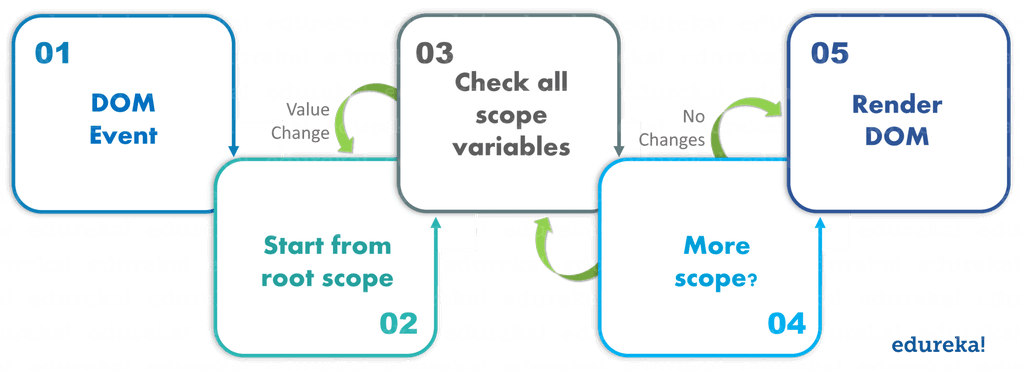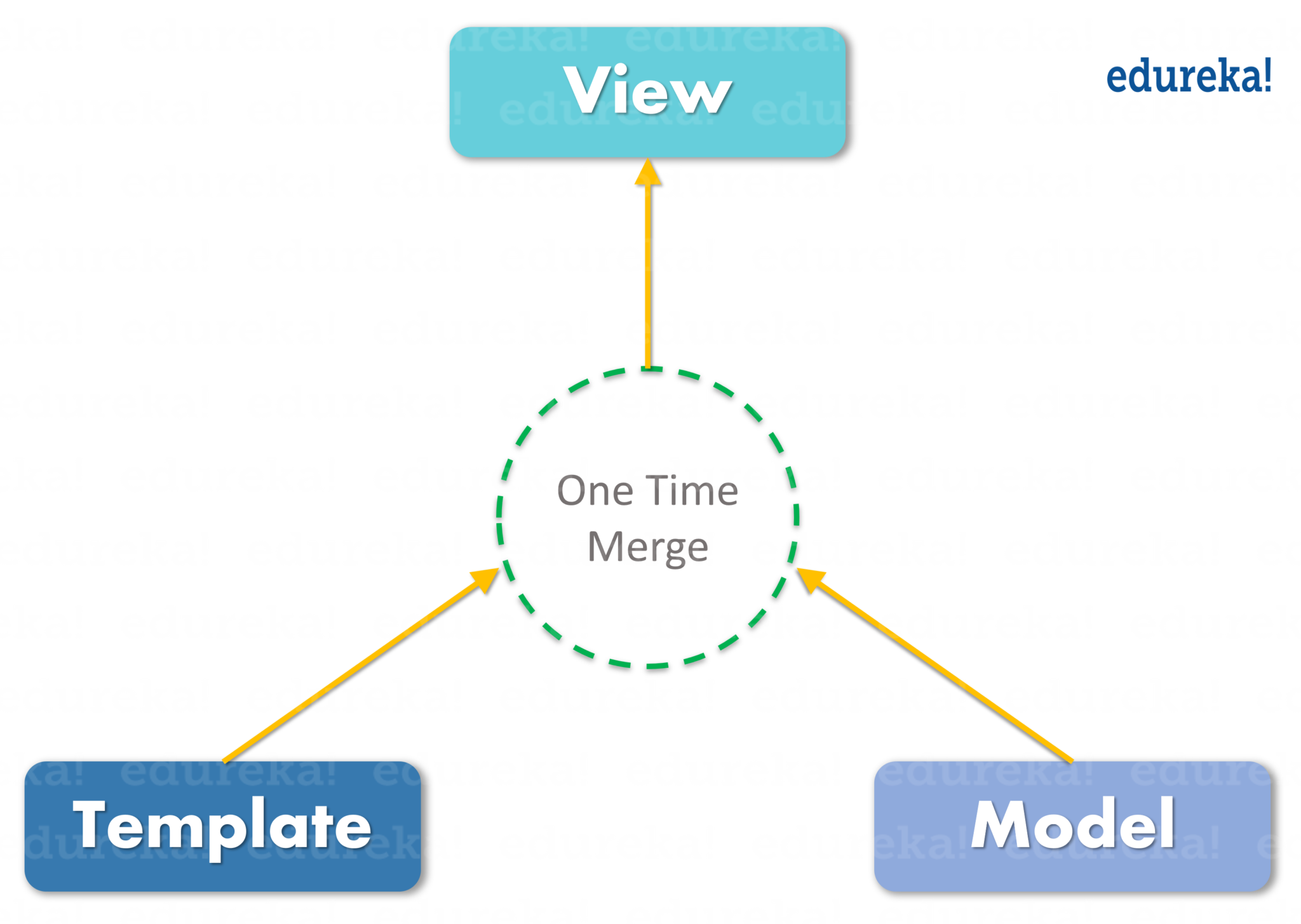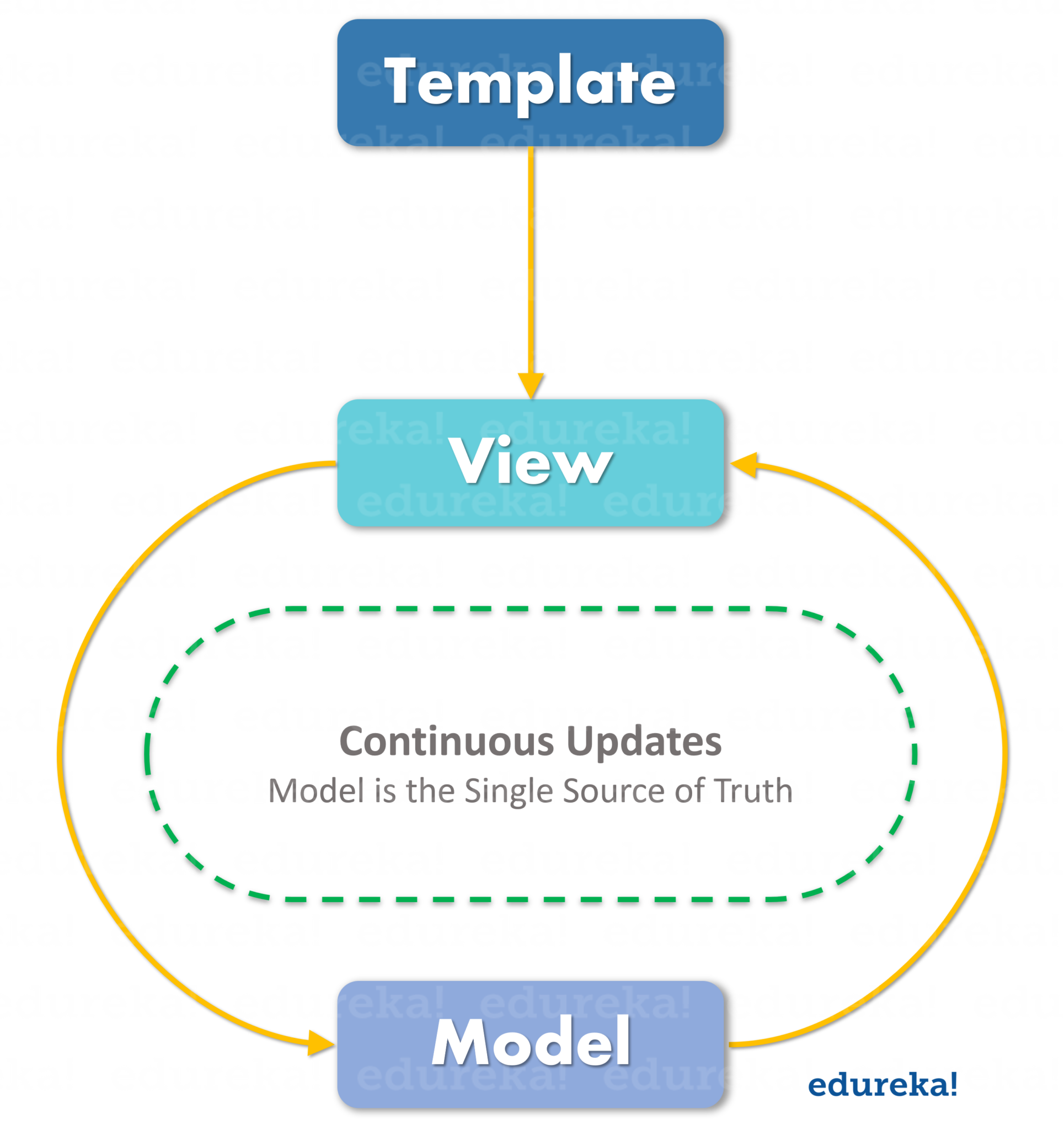

Top Angular Interview Questions You Must Prepare For 2020 | Edureka
source link: https://www.edureka.co/blog/interview-questions/top-angularjs-interview-questions-2016/
Go to the source link to view the article. You can view the picture content, updated content and better typesetting reading experience. If the link is broken, please click the button below to view the snapshot at that time.
Top Angular Interview Questions You Must Prepare In 2020
Last updated on Jul 21,2020 461K ViewsIn this Angular Interview Questions article, I am going to list some of the most important Angular Interview Questions and Answers which will set you apart in the interview process in 2019. Angular continues to dominate the arena of the Javascript framework and has proved itself to be a worthy investment for web developers who seek to fast-track their career. No surprises there, Angular is majorly known for its ability to create single-page web applications that encompass three critical components – speed, agility and a strong community backing it up. Angular is known as the Swiss army knife of frontend developers! This is the reason why Angular Certification is the most in-demand certification in scripting domain.
Let us start by taking a look at some of the most frequently asked Angular interview questions,
Want to Upskill yourself to get ahead in Career? Check out the Top Trending Technologies.
We have compiled a list of top Angular interview questions which are classified into 3 sections, namely:
As an Angular professional, it is essential to know the right buzzwords, learn the right technologies and prepare the right answers to commonly asked Angular Interview Questions. Here’s a definitive list of top Angular Interview Questions that will guarantee a breeze-through to the next level.
In case you attended any Angular interview recently, or have additional questions beyond what we covered, we encourage you to post them in our QnA Forum. Our expert team will get back to you at the earliest.
So let’s get started with the first set of basic Angular Interview Questions.
Beginners Level – Angular Interview Questions
1. Differentiate between Angular and AngularJS.
FeatureAngularJSAngularArchitectureSupports MVC design modelUses components and directivesLanguageRecommended Language: JavaScript Recommended Language: TypeScriptExpression SyntaxSpecific ng directive is required for the image/property and an eventUses () to bind an event and [] for property bindingMobile SupportDoesn’t provide any mobile supportProvides mobile supportRouting$routeprovider.when() is used for routing configs@RouteConfig{(…)} is used for routing configDependency InjectionDoesn’t supports the concept of Dependency InjectionSupports hierarchical Dependency Injection with a unidirectional tree-based change detectionStructureLess manageableSimplified structure and makes the development and maintenance of large applications easierSpeedWith two-way data binding development effort and time are reducedFaster than AngularJS with upgraded featuresSupportNo support or new updates are provided anymoreActive support and frequent new updates are made2. What is Angular?
Angular is an open-source front-end web framework. It is one of the most popular JavaScript frameworks that is mainly maintained by Google. It provides a platform for easy development of web-based applications and empowers the front end developers in curating cross-platform applications. It integrates powerful features like declarative templates, an end to end tooling, dependency injection and various other best practices that smoothens the development path.
3. What are the advantages of using Angular?
A few of the major advantages of using Angular framework are listed below:
- It supports two-way data-binding
- It follows MVC pattern architecture
- It supports static template and Angular template
- You can add a custom directive
- It also supports RESTfull services
- Validations are supported
- Client and server communication is facilitated
- Support for dependency injection
- Has strong features like Event Handlers, Animation, etc.
4. What is Angular mainly used for?
Angular is typically used for the development of SPA which stands for Single Page Applications. Angular provides a set of ready-to-use modules that simplify the development of single page applications. Not only this, with features like built-in data streaming, type safety, and a modular CLI, Angular is regarded as a full-fledged web framework.
5. What are Angular expressions?
Angular expressions are code snippets that are usually placed in binding such as {{ expression }} similar to JavaScript. These expressions are used to bind application data to HTML
Syntax: {{ expression }}
6. What are templates in Angular?
Templates in Angular are written with HTML that contains Angular-specific elements and attributes. These templates are combined with information coming from the model and controller which are further rendered to provide the dynamic view to the user.
7. In Angular what is string interpolation?
String interpolation in Angular is a special syntax that uses template expressions within double curly {{ }} braces for displaying the component data. It is also known as moustache syntax. The JavaScript expressions are included within the curly braces to be executed by Angular and the relative output is then embedded into the HTML code. These expressions are usually updated and registered like watches, as a part of the digest cycle.
8. What is the difference between an Annotation and a Decorator in Angular?
Annotations in angular are “only” metadata set of the class using the Reflect Metadata library. They are used to create an “annotation” array. On the other hand, decorators are the design patterns that are used for separating decoration or modification of a class without actually altering the original source code.
9. What do you understand by controllers in Angular?
Controllers are JavaScript functions which provide data and logic to HTML UI. As the name suggests, they control how data flows from the server to HTML UI.
10. What is scope in Angular?
Scope in Angular is an object that refers to the application model. It is an execution context for expressions. Scopes are arranged in a hierarchical structure which mimics the DOM structure of the application. Scopes can watch expressions and propagate events.
11. What are directives in Angular?
A core feature of Angular, directives are attributes that allow you to write new HTML syntax, specific to your application. They are essentially functions that execute when the Angular compiler finds them in the DOM. The Angular directives are segregated into 3 parts:
- Component Directives
- Structural Directives
- Attribute Directives
12. What is data binding?
In Angular, data binding is one of the most powerful and important features that allow you to define the communication between the component and DOM(Document Object Model). It basically simplifies the process of defining interactive applications without having to worry about pushing and pulling data between your view or template and component. In Angular, there are four forms of data binding:
- String Interpolation
- Property Binding
- Event Binding
- Two-Way Data Binding
13. What is the purpose of a filter in Angular?
Filters in Angular are used for formatting the value of an expression in order to display it to the user. These filters can be added to the templates, directives, controllers or services. Not just this, you can create your own custom filters. Using them, you can easily organize data in such a way that the data is displayed only if it fulfills certain criteria. Filters are added to the expressions by using the pipe character |, followed by a filter.
14. What are the differences between Angular and jQuery?
FeaturesjQueryAngularDOM ManipulationYesYesRESTful APINoYesAnimation SupportYesYesDeep Linking RoutingNoYesForm ValidationNoYesTwo Way Data BindingNoYesAJAX/JSONPYesYes15. What is a provider in Angular?
A provider is a configurable service in Angular. It is an instruction to the Dependency Injection system that provides information about the way to obtain a value for a dependency. It is an object that has a $get() method which is called to create a new instance of a service. A Provider can also contain additional methods and uses $provide in order to register new providers.
Intermediate Level – Angular Interview Questions
16. Does Angular support nested controllers?
Yes, Angular does support the concept of nested controllers. The nested controllers are needed to be defined in a hierarchical manner for using it in the View.
17. How can you differentiate between Angular expressions and JavaScript expressions?
Angular ExpressionsJavaScript Expressions1. They can contain literals, operators, and variables.1. They can contain literals, operators, and variables.2. They can be written inside the HTML tags.2. They can’t be written inside the HTML tags.3. They do not support conditionals, loops, and exceptions.3. They do support conditionals, loops, and exceptions.4. They support filters.4. They do not support filters.18. List at down the ways in which you can communicate between applications modules using core Angular functionality.
Below are the most general ways for communicating between application modules using core Angular functionality :
- Using events
- Using services
- By assigning models on $rootScope
- Directly between controllers [$parent, $$childHead, $$nextSibling, etc.]
- Directly between controllers [ControllerAs, or other forms of inheritance]
19. What is the difference between a service() and a factory()?
A service() in Angular is a function that is used for the business layer of the application. It operates as a constructor function and is invoked once at the runtime using the ‘new’ keyword. Whereas factory() is a function which works similar to the service() but is much more powerful and flexible. factory() are design patterns which help in creating Objects.
20. What is the difference between $scope and scope in Angular?
- $scope in Angular is used for implementing the concept of dependency injection (D.I) on the other hand scope is used for directive linking.
- $scope is the service provided by $scopeProviderwhich can be injected into controllers, directives or other services whereas Scope can be anything such as a function parameter name, etc.
21. Explain the concept of scope hierarchy?
The $scope objects in Angular are organized into a hierarchy and are majorly used by views. It contains a root scope which can further contain scopes known as child scopes. One root scope can contain more than one child scopes. Here each view has its own $scope thus the variables set by its view controller will remain hidden to the other controllers. The Scope hierarchy generally looks like:
- Root $scope
- $scope for Controller 1
- $scope for Controller 2
- $scope for Controller ‘n’
22. What is AOT?
AOT stands for Angular Ahead-of-Time compiler. It is used for pre-compiling the application components and along with their templates during the build process. Angular applications which are compiled with AOT has a smaller launching time. Also, components of these applications can execute immediately, without needing any client-side compilation. Templates in these applications are embedded as code within their components. It reduces the need for downloading the Angular compiler which saves you from a cumbersome task. AOT compiler can discard the unused directives which are further thrown out using a tree-shaking tool.
23. Explain jQLite.
jQlite is also known as jQuery lite is a subset of jQuery and contains all its features. It is packaged within Angular, by default. It helps Angular to manipulate the DOM in a way that is compatible cross-browser. jQLite basically implements only the most commonly needed functionality which results in having a small footprint.
24. Explain the process of digest cycle in Angular?
The digest cycle in Angular is a process of monitoring the watchlist for keeping a track of changes in the value of the watch variable. In each digest cycle, Angular compares the previous and the new version of the scope model values. Generally, this process is triggered implicitly but you can activate it manually as well by using $apply().

25. What are the Angular Modules?
All the Angular apps are modular and follow a modularity system known as NgModules. These are the containers which hold a cohesive block of code dedicated specifically to an application domain, a workflow, or some closely related set of capabilities. These modules generally contain components, service providers, and other code files whose scope is defined by the containing NgModule. With modules makes the code becomes more maintainable, testable, and readable. Also, all the dependencies of your applications are generally defined in modules only.
26. On which types of the component can we create a custom directive?
Angular provides support to create custom directives for the following:
- Element directives − Directive activates when a matching element is encountered.
- Attribute − Directive activates when a matching attribute is encountered.
- CSS − Directive activates when a matching CSS style is encountered.
- Comment − Directive activates when a matching comment is encountered
27. What are the different types of filters in Angular?
Below are the various filters supported by Angular:
- currency: Format a number to a currency format.
- date: Format a date to a specified format.
- filter: Select a subset of items from an array.
- json: Format an object to a JSON string.
- limit: To Limits an array/string, into a specified number of elements/characters.
- lowercase: Format a string to lower case.
- number: Format a number to a string.
- orderBy: Orders an array by an expression.
- uppercase: Format a string to upper case.
28. What is Dependency Injection in Angular?
Dependency Injection (DI) is a software design pattern where the objects are passed as dependencies rather than hard-coding them within the component. The concept of Dependency Injection comes in handy when you are trying to separate the logic of object creation to that of its consumption. The ‘config’ operation makes use of DI that must be configured beforehand while the module gets loaded to retrieve the elements of the application. With this feature, a user can change dependencies as per his requirements.
29. Differentiate between one-way binding and two-way data binding.
In One-Way data binding, the View or the UI part does not update automatically whenever the data model changes. You need to manually write custom code in order to update it every time the view changes.

Whereas, in Two-way data binding, the View or the UI part is updated implicitly as soon as the data model changes. It is a synchronization process, unlike One-way data binding.

30. What are the lifecycle hooks for components and directives?
An Angular component has a discrete life-cycle which contains different phases as it transits through birth till death. In order to gain better control of these phases, we can hook into them using the following:
- constructor: It is invoked when a component or directive is created by calling new on the class.
- ngOnChanges: It is invoked whenever there is a change or update in any of the input properties of the component.
- ngOnInit: It is invoked every time a given component is initialized. This hook is only once called in its lifetime after the first ngOnChanges.
- ngDoCheck: It is invoked whenever the change detector of the given component is called. This allows you to implement your own change detection algorithm for the provided component.
- ngOnDestroy: It is invoked right before the component is destroyed by Angular. You can use this hook in order to unsubscribe observables and detach event handlers for avoiding any kind of memory leaks.
31. What do you understand by dirty checking in Angular?
In Angular, the digest process is known as dirty checking. It is called so as it scans the entire scope for changes. In other words, it compares all the new scope model values with the previous scope values. Since all the watched variables are contained in a single loop, any change/update in any of the variable leads to reassigning of rest of the watched variables present inside the DOM. A watched variable is in a single loop(digest cycle), any value change of any variable forces to reassign values of other watched variables in DOM
32. Differentiate between DOM and BOM.
DOMBOM1. Stands for Document Object Model1. Stands for Browser Object Model2. Represents the contents of a web page2. Works a level above web page and includes browser attributes3. All the Objects are arranged in a tree structure and the document can be manipulated & accessed via provided APIs only3. All global JavaScript objects, variables & functions become members of the window object implicitly4. Manipulates HTML documents4. Access and manipulate the browser window5. W3C Recommended standard specifications5. Each browser has its own implementation33. What is Transpiling in Angular?
Transpiling in Angular refers to the process of conversion of the source code from one programming language to another. In Angular, generally, this conversion is done from TypeScript to JavaScript. It is an implicit process and happens internally.
34. How to perform animation in Angular?
In order to perform animation in an Angular application, you need to include a special Angular library known as Animate Library and then refer to the ngAnimate module into your application or add the ngAnimate as a dependency inside your application module.
35. What is transclusion in Angular?
The transclusion in Angular allows you to shift the original children of a directive into a specific location within a new template. The ng directive indicates the insertion point for a transcluded DOM of the nearest parent directive that is using transclusion. Attribute directives like ng-transclude or ng-transclude-slot are mainly used for transclusion.
36. What are events in Angular?
Events in Angular are specific directives that help in customizing the behavior of various DOM events. Few of the events supported by Angular are listed below:
- ng-click
- ng-copy
- ng-cut
- ng-dblclick
- ng-keydown
- ng-keypress
- ng-keyup
- ng-mousedown
- ng-mouseenter
- ng-mouseleave
- ng-mousemove
- ng-mouseover
- ng-mouseup
- ng-blur
37. List some tools for testing angular applications?
- Karma
- Angular Mocks
- Mocha
- Browserify
38. How to create a service in Angular?
In Angular, a service is a substitutable object that is wired together using dependency injection. A service is created by registering it in the module it is going to be executed within. There are basically three ways in which you can create an angular service. They are basically three ways in which a service can be created in Angular:
- Factory
- Service
- Provider
39. What is a singleton pattern and where we can find it in Angular?
Singleton pattern in Angular is a great pattern which restricts a class from being used more than once. Singleton pattern in Angular is majorly implemented on dependency injection and in the services. Thus, if you use ‘new Object()’ without making it a singleton, then two different memory locations will be allocated for the same object. Whereas, if the object is declared as a singleton, in case it already exists in the memory then simply it will be reused.
40. What do you understand by REST in Angular?
REST stands for REpresentational State Transfer. REST is an API (Application Programming Interface) style that works on the HTTP request. In this, the requested URL pinpoints the data that needs to be processed. Further ahead, an HTTP method then identifies the specific operation that needs to be performed on that requested data. Thus, the APIs which follows this approach are known as RESTful APIs.
41. What is bootstrapping in Angular?
Bootstrapping in Angular is nothing but initializing, or starting the Angular app. Angular supports automatic and manual bootstrapping.
- Automatic Bootstrapping: this is done by adding the ng-app directive to the root of the application, typically on the tag or tag if you want angular to bootstrap your application automatically. When Angular finds ng-app directive, it loads the module associated with it and then compiles the DOM.
- Manual Bootstrapping: Manual bootstrapping provides you more control on how and when to initialize your Angular application. It is useful where you want to perform any other operation before Angular wakes up and compile the page.
42. What is the difference between a link and compile in Angular?
- Compile function is used for template DOM Manipulation and to collect all the directives.
- Link function is used for registering DOM listeners as well as instance DOM manipulation and is executed once the template has been cloned.
43. What do you understand by constants in Angular?
In Angular, constants are similar to the services which are used to define the global data. Constants are declared using the keyword “constant”. They are created using constant dependency and can be injected anywhere in controller or services.
44. What is the difference between a provider, a service and a factory in Angular?
ProviderServiceFactoryA provider is a method using which you can pass a portion of your application into app.configA service is a method that is used to create a service instantiated with the ‘new’ keyword.It is a method that is used for creating and configuring services. Here you create an object, add properties to it and then return the same object and pass the factory method into your controller.45. What are Angular Global APIs?
Angular Global API is a combination of global JavaScript functions for performing various common tasks like:
- Comparing objects
- Iterating objects
- Converting data
There are some common Angular Global API functions like:
- angular. lowercase: Converts a string to lowercase string.
- angular. uppercase: Converts a string to uppercase string.
- angular. isString: Returns true if the current reference is a string.
- angular. isNumber: Returns true if the current reference is a number.
Advanced Level – Angular Interview Questions
46. In Angular, describe how will you set, get and clear cookies?
For using cookies in Angular, you need to include a module called ngCookies angular-cookies.js.
To set Cookies – For setting the cookies in a key-value format ‘put’ method is used.
cookie.set('nameOfCookie',"cookieValue");To get Cookies – For retrieving the cookies ‘get’ method is used.
cookie.get(‘nameOfCookie’);
To clear Cookies – For removing cookies ‘remove’ method is used.
cookie.delete(‘nameOfCookie’);
47. If your data model is updated outside the ‘Zone’, explain the process how will you the view?
You can update your view using any of the following:
- ApplicationRef.prototype.tick(): It will perform change detection on the complete component tree.
- NgZone.prototype.run(): It will perform the change detection on the entire component tree. Here, the run() under the hood will call the tick itself and then parameter will take the function before tick and executes it.
- ChangeDetectorRef.prototype.detectChanges(): It will launch the change detection on the current component and its children.
48. Explain ng-app directive in Angular.
ng-app directive is used to define Angular applications which let us use the auto-bootstrap in an Angular application. It represents the root element of an Angular application and is generally declared near <html> or <body> tag. Any number of ng-app directives can be defined within an HTML document but just a single Angular application can be officially bootstrapped implicitly. Rest of the applications must be manually bootstrapped.
Example
<div ng-app=“myApp” ng-controller=“myCtrl”>
First Name :
<input type=“text” ng-model=“firstName”>
<br />
Last Name :
<input type=“text” ng-model=“lastName”>
<br>
Full Name: {{firstName + ” ” + lastName }}
</div>
49. What is the process of inserting an embedded view from a prepared TemplateRef?
@Component({
selector: 'app-root',
template: `
<ng-template #template let-name='fromContext'><div>{{name}}</ng-template>
`
})
export class AppComponent implements AfterViewChecked {
@ViewChild('template', { read: TemplateRef }) _template: TemplateRef<any>;
constructor() { }
ngAfterViewChecked() {
this.vc.createEmbeddedView(this._template, {fromContext: 'John'});
}
}50. How can you hide an HTML element just by a button click in angular?
An HTML element can be easily hidden using the ng-hide directive in conjunction along with a controller to hide an HTML element on button click.
View
<div ng-controller="MyController"> <button ng-click="hide()">Hide element</button> <p ng-hide="isHide">Hello World!</p> </div>
Controller
controller: function() {
this.isHide = false;
this.hide = function(){
this.isHide = true; }; }
So this brings us to the end of the Angular interview questions article. The topics that you learned in this Angular Interview Questions article are the most sought-after skill sets that recruiters look for in an Angular Professional. These set of Angular Interview Questions will definitely help you ace your job interview. Good luck with your interview!
If you found this “Angular Interview Questions” relevant, check out the Angular Certification Trainingby Edureka, a trusted online learning company with a network of more than 250,000 satisfied learners spread across the globe.
Got a question for us? Please mention it in the comments section of this Angular Interview Questions and we will get back to you.
Recommend
About Joyk
Aggregate valuable and interesting links.
Joyk means Joy of geeK


